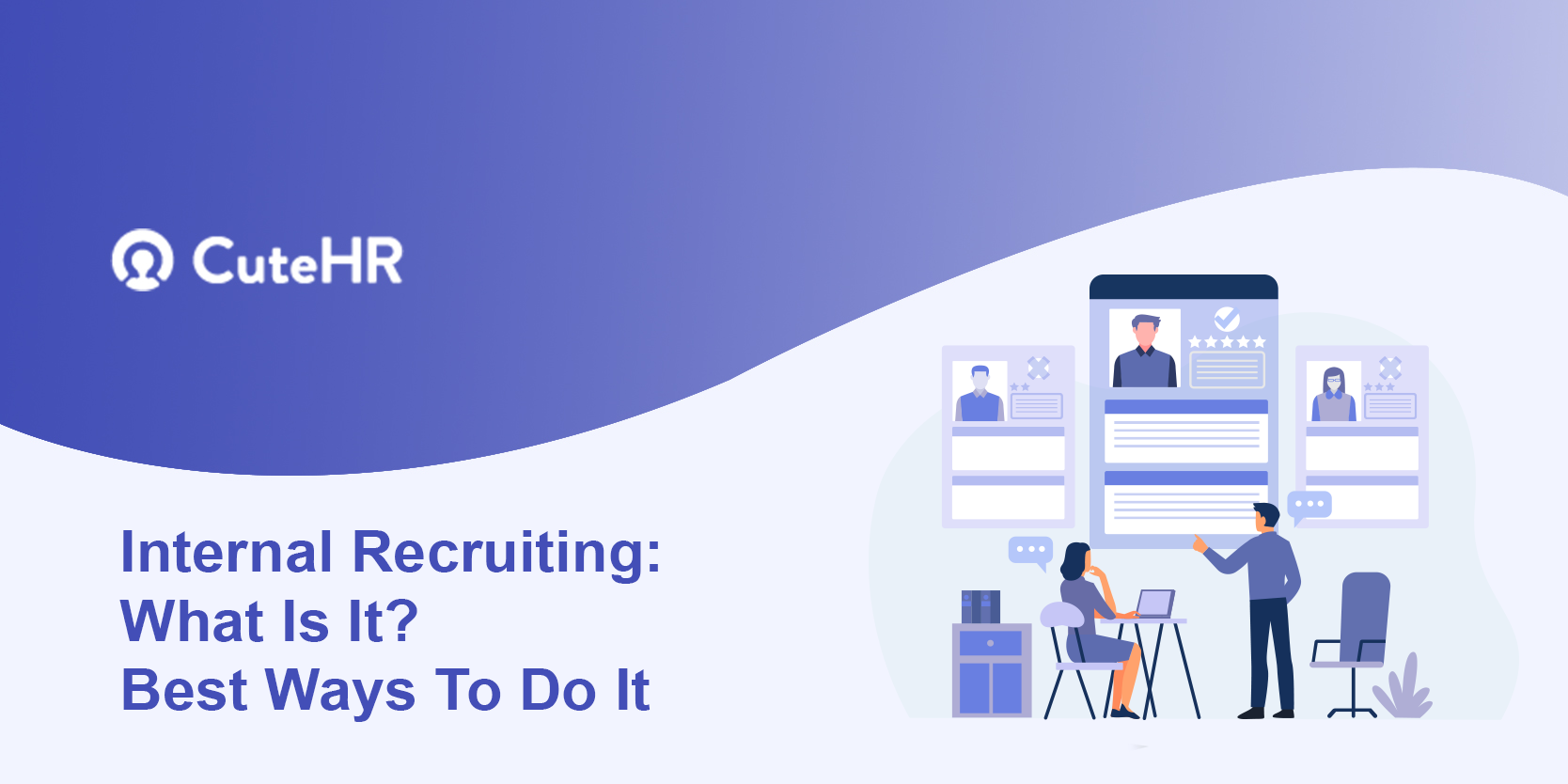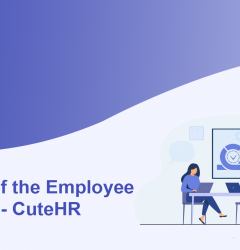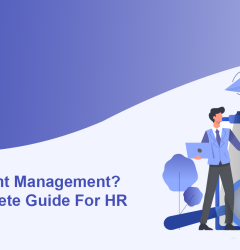09 Apr

For numerous a long time, HR has depended on recruiting outside candidates to fill work openings inside their organization. However, we are in a distinctive reality nowadays than we were indeed 2 months back. Whereas contracting plans are put on hold within the current widespread, organizational abilities holes still exist. In this questionable environment, numerous organizations are looking towards internal recruiting to address their needs.
Table of Contents
What Is Internal Recruiting?
Internal recruiting is any way of locating and attracting job prospects from within a business. There are a variety of formal and informal methods that can be utilized to find quality candidates within an organization.
However, internal recruiting has some drawbacks compared to recruiting from the outside. Let’s face it, every organization and every hiring manager should assess their demands and build a recruitment plan that they believe would yield the finest prospects for their requirements.
Methods Of Internal Recruiting
No matter how much recruiters want to plan and fill positions as soon as possible, things don’t always go as planned. We slip back into old patterns (that we know don’t usually work) when we’re under pressure from recruiting managers.
As a result of reactive recruitment, there is a tendency to post a position on every available job board and cross one’s fingers that a wonderful candidate will show up. As for luck, it comes and goes.
To attract people in diverse ways, recruiters must have a variety of rapid solutions available. Let us discuss with you the numerous internal recruiting methods you might use:
1. Direct Advertising
Your career site, career boards, social media, and industry periodicals are ideal places to post job ads to attract a large number of people. Your employer branding is also promoted, as is your company’s image. However, external advertising might be highly costly.
Your adverts may attract unsuitable applicants if you do not put them in the right places or you may receive too few applications if you do not post them in the right places.
2. Employee Referrals
Employee referral programs are common in most firms. It is a combination of internal recruiting and external recruiting. Vacancies can be filled by existing employees who are encouraged to refer their friends.
What makes it valuable is its efficiency as well as the assurance that staff won’t send undesirable prospects. An internal employee knows more about your company than an external one.
3. Boomerang Employees
The practice of rehiring former employees is on the rise. The phrase boomerang employee refers to employees who worked effectively for a company but left on good terms for a variety of reasons.
Due to their familiarity with the employee’s skills and knowledge of the corporate culture, employers favor rehiring them. This saves time to hire, removes the danger of a bad hire, and lowers the cost per hire when hiring boomerang employees.
4. Databases of Available Talent
Search your talent pool database for applicants and prospects who weren’t employed but were suitable enough to save in case they are needed in the future. There are usually at least two or three prospects to choose from when making an internal recruiting selection in most cases.
Your talent pool can be searched for similar abilities and expertise when a new opportunity arises The time you’d save yourself would be enormous.
5. Workplace Exchanges
Even though employment exchanges are not available in all nations, they are required in others. Government-run employment exchanges keep track of unemployed job searchers.
Companies post job openings on the exchange and are matched with qualified candidates. Exchanges are cost-effective, but they’re best used for lower-level jobs in factories and farms.
6. Transfers and Promotions
Indeed, promotions and transfers are not the same things, but they do share a similar notion. To fill unfilled positions, internal candidates are identified and interviewed. Someone is given additional responsibility and receives a pay raise as a result of being promoted up the ladder. It’s a horizontal move that doesn’t involve more obligations or money.
A staff member can be transferred to a similar position in a different branch, region, or department.
7. Professional Organizations
For highly qualified positions, professional associations can be a great source of candidates. When someone qualifies for certain professions, they must join the proper professional organization.
Another option is to register with a non-profit organization things are optional but lowers add legitimacy to a candidate’s credentials. With the help of one of these groups or alliances, your company can gain access to elite talent.
8. Staffing Firms
Recruiting agencies can help you with your employment procedure. Agencies oversee the entire recruiting process for you. Using an agency is expensive, but it frees up your time so you may focus on more important concerns. When it comes to difficult-to-fill roles and for firms who don’t have the internal HR resources to focus on hiring, internal recruiting services are a terrific alternative.
An external recruiter is likewise a viable option for reaching out to certain individuals who you’d like attracted to your organization. A passive applicant that would be excellent for your function may exist, but they work for your adversary.
9. Recruitment Events
Recruiting events are ideal for large organizations or corporations looking to expand. Open days, career fairs, hackathons, and graduate internal recruiting drives are just a few examples of events that might be held on a college campus. Events can cost a lot of cash.
Because of this, you must know exactly what type of candidate you want to recruit and what your employer value proposition is to maximize your return on investment (ROI).
Another wonderful technique to uncover possible candidates is to have them shadow you at work. It’s also a great way to promote your employer brand and let people know that your organization is committed to growing employees’ abilities.
10. Apprenticeships and Internships
To get to know the strengths of individuals, employers offer internships and apprenticeships, which can be thought of as the equivalent of a “workplace interview.” Management can examine potential interns or apprentices during this time and identify those who can be trained to fill future positions.
They will all be hired as entry-level employees to begin with. Unsuccessful internship and apprenticeship programs are a waste of time.
11. Word of Mouth
Huge brands and multinationals can effectively utilize word-of-mouth strategies of enrollment since spontaneous work searchers approach them day by day. Their manager brand is set up, and they’re recognized as the manager of choice. All they ought to do is put the word out that they’re contracting and they will get a great reaction.
12. Bulletin Boards
There are still jobs available that can be posted on bulletin boards. Typical examples are factory and agricultural jobs. Unemployed individuals frequently gather at plant gates to await the announcement of day or contact jobs.
Seasonal workers in agriculture congregate at local markets or co-ops to view job postings posted by local farmers.
Advantages of Internal Recruiting
When it comes to hiring, it’s always better to start with what you already have. Here are some of the advantages of internal recruiting, ranging from cost savings to employee engagement.
Saves Money
What happens after you decrease the time to enlist and abbreviate onboarding times? You save cash. In expansion to assets spared on finding and preparing staff or enlisting supervisors, you cut back on cash utilized for things like utilizing exterior scouts, conducting outside enlisting, going to work fairs, and running foundation checks.
If you calculate in that numerous inside representatives are up to speed on their modern employments and creating quicker than modern hires, that’s extra esteem you’ll include to your foot line.
Hosting a LinkedIn Party is another wonderful approach to quickly acquire talent. Simply put, it’s a good idea. Invite your employees to some form of event. Simple or elaborate, depending on your schedule, resources available, and money. But at the very least, consider providing beverages and snacks.
When they arrive, everyone logs on to LinkedIn and contacts friends, acquaintances, and previous co-workers who may be qualified for your vacant positions.
This celebration encourages employees to focus on sourcing, while also providing a fun place for them to spend time with each other.
Suggestion: Consider awarding a prize to an employee who interacts most with guests throughout the event.
Shortens the time to hire
Your internal applicants are already familiar with your company, as opposed to external prospects, who must be recruited from scratch. For example, external job advertisements on job boards and elsewhere can be skipped, along with the review procedure.
Their pay history, past performance reviews, and background checks are already available. Candidates that have been thoroughly vetted and are familiar with your company’s culture save you time and allow you to fill openings swiftly. And you can do it without a lot of the training and onboarding that comes with hiring a new employee.
Abbreviates Onboarding Times
Instead of having to spend months teaching how payroll works or setting employee behavior expectations, you’ll be able to focus on your core business. Your internal recruiting hire is already familiar with the company’s basic regulations and culture.
Your time will be saved by not having to spend extra time helping them make connections. Although the function is new to them, they appreciate its importance in the bigger picture of your organization because they are familiar with it.
Strengthens Employee Engagement
Isn’t it interesting what occurs when news gets out that a corporation wants to hire from within? Employees are enthused by the potential of a bright future in their careers. Your brand will benefit from investing in people. Creates positive work culture and communicates to others outside of the organization that working for you offers long-term benefits
Trust comes from employees who know that they’ll be given priority over outsiders in the organization. Because of this, employees are more likely to stay with the company.
Disadvantages of Internal Recruiting
Even while this method has many advantages, it’s not a foolproof plan by any stretch of the imagination. Before implementing an internal recruiting strategy, everyone involved in the hiring process, from Human Resources teams to managers, should be aware of the potential pitfalls of such an approach.
The existing Workforce is left with a void
While internal recruiting is a good technique to fill new positions, it almost always leaves a vacuum in the organization. If the promoted person leaves, how will you replace the void? Finally, you may replace the position through internal recruiting, leaving yet another void. An ongoing cycle of staff swapping may lead you to look for external candidates to interrupt the loop.
Creates Conflict Amongst Colleagues
Adapting to a new boss can be challenging no matter what the situation. But what if the new CEO was formerly a peer? Employing coworkers who aren’t ready for a change in function or responsibility can create resentment inside the workplace. After a while, people who applied for a job but didn’t receive one can grow bitter.
When it comes to professional advancement, certain departments may be reluctant to let go of good team members. The quality of internal recruiting might harm interpersonal connections. For a successful transition, it’s important to be aware of these possibilities and prepare for them.
Results in an Inflexible Culture
Another risk of internal recruiting is that your staff may become overly comfortable. Cliques can emerge and workers may become reluctant to change if groups are not refreshed with new faces regularly.
Because change can be perceived as a challenge to how they’ve always done things, this type of inflexible culture may bring out the worst in your workplace. Consider how to introduce new ways of doing things, even if the task is being done by the same individuals.
Reduces the number of applicants in your pool
Let’s be honest. While your current employees are capable, they may not possess all of the qualities you seek in new hiring. That implies you might have to search outside your firm for someone with, particularly specific or technical skill sets. Not only that, but someone from a different industry can be more equipped to bring a new perspective to a post.
If you work in a rapidly changing area, such as wellness or technology, there is a real risk that your talent will become stagnant. Consider how internal hiring may limit your alternatives in particular situations.
Ways to Avoid the Disadvantages Of Internal Recruiting
What can you do now that you’re aware of some of the disadvantages of internal recruiting? Among the strategies that have proven effective for other businesses are:
1. Explain How Hiring Works
Inform your internal candidates about how you arrived at your hiring decision. If they want to know more, consider convening a meeting to discuss what they can do to improve their position the next time. Consider developing an internal employee recommendation program to further incentivize employees to remain involved in internal recruiting.
2. Only Share Open Positions
If you have someone in mind for a job position, don’t even mention it. Giving employees false optimism that they will be considered for a position may lead to conflict. Send out a request for internal applicants only if you are seriously evaluating all internal candidates.
3. Give Other Ways for Versatility
Provide opportunities for employees to learn and grow within your organization, even if they aren’t a strong fit for advancement. Some employees may not be fit for managerial positions, but they should have several opportunities to be challenged and feel important in their work. Good work should be recognized with bonuses, even if the employee does not advance.
4. Provide Managers with Tools for Developing Succession Plans
On the off chance that you haven’t as of now prepared your pioneers on how to hunt for appropriate inner candidates, do so. Get your following director’s input sometime recently they are required and make it simple for representatives to move up and encourage their career path. This way, when an opening happens, you’ll check in with division heads to see who is as of now suited to fill the hole.
5. Use more than one source of recruitment
Invest in a hiring strategy that includes both new faces and seasoned employees. Internal recruiting and external assistance systems can be balanced. You can hire the top candidates by working directly with your hiring managers using Comeet’s Elastic Recruiting.
Businesses of every size can benefit from internal recruitment. There are a few things agile organizations do to keep their productivity high even when unemployment is low. Another option to increase the efficiency of external hiring is to use an applicant tracking system such as Comeet. Find out how we can help you achieve your goals.
Wrapping It Up
At its center, internal recruiting could be a or maybe straightforward concept–it includes recognizing candidates and contracting them to fill open positions. In any case, viable selecting combines a bit of craftsmanship with science. It requires actualizing repeatable forms that will lead to solid comes about, on the one hand. On the other, it requires advancement to think exterior the box in arrange to discover your perfect candidate.
Frequently Asked Questions (FAQs)
What are the examples of internal recruiting?
The various kinds of internal recruiting:-
Promotions.
Transfers.
Advertisements.
From a freelancer to a full-time job.
Enlisting retired former employees to work as freelancers or on a part-time basis.
Having a referral program for employees.
What characteristics distinguish a competent internal recruiter?
You should be comfortable and productive working in a fast-paced atmosphere to be a competent internal recruiter. Excellent writing and verbal communication abilities, as well as interpersonal skills when speaking with fresh talent prospects, are required for success in this position.












Himani